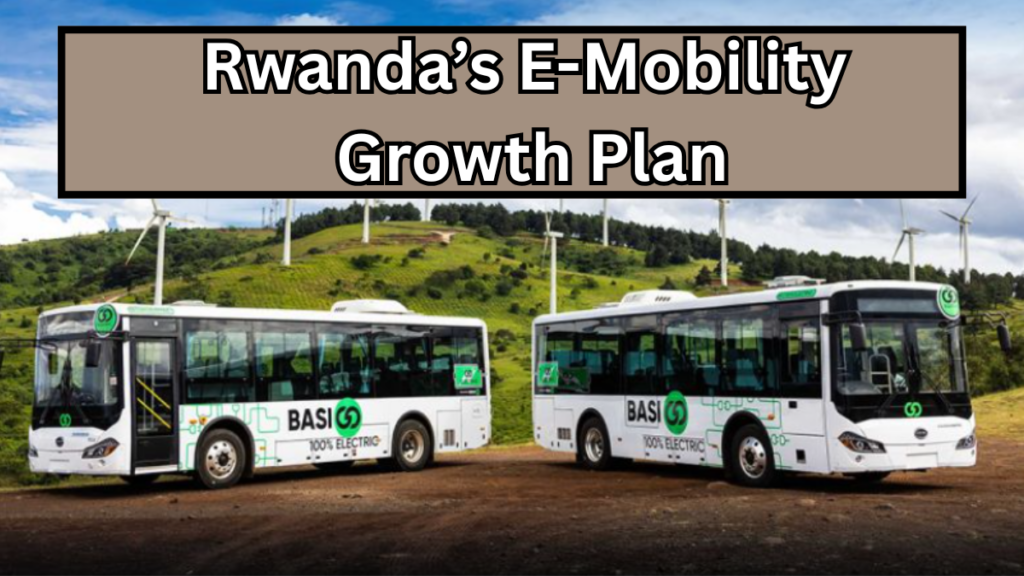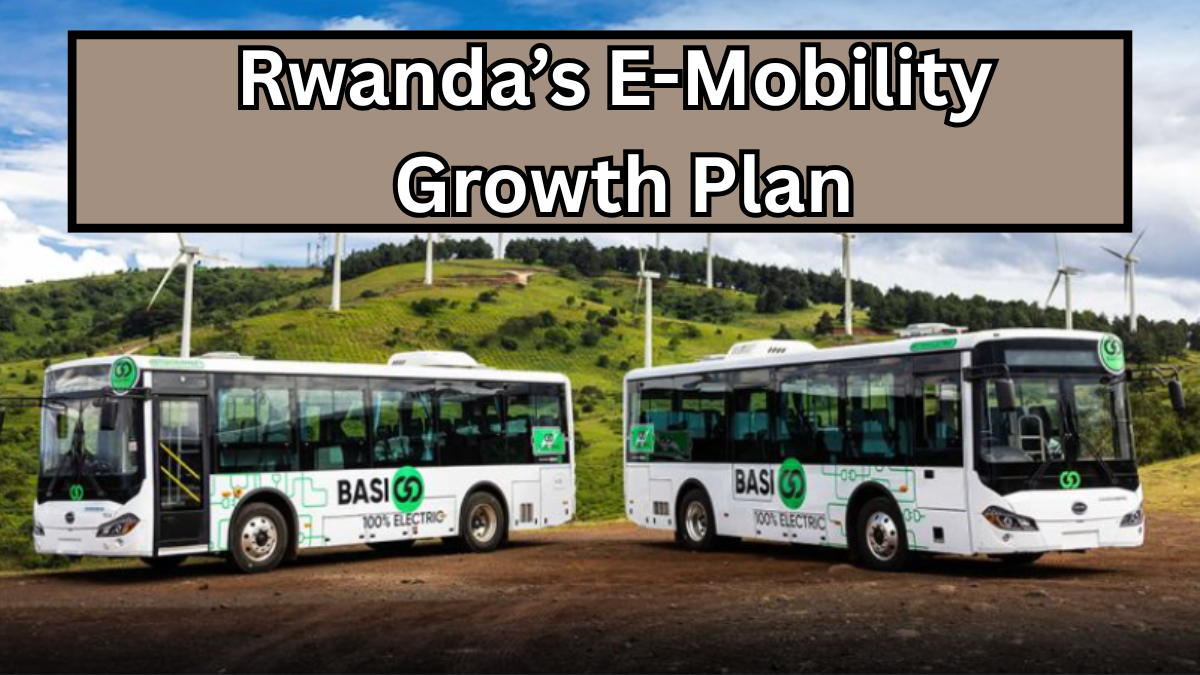Rwanda is moving steadily towards a greener future by embracing electric mobility (E-Mobility). The country’s progressive approach aims to reduce carbon emissions, cut down on fuel imports, and offer affordable, sustainable transport options to its citizens.

Rwanda’s Bold Steps Towards E-Mobility
The Rwanda EV Policy is designed to revolutionize the country’s transportation system. This national plan focuses on:
-
Introducing electric buses
-
Expanding charging infrastructure
-
Offering tax incentives for electric vehicle (EV) users
Let’s explore how Rwanda is transforming its roads and policies to support a clean, efficient transport future.
Key Focus Areas of Rwanda’s E-Mobility Plan
Electric Buses Rollout
Rwanda plans to introduce electric buses on busy urban routes to:
-
Reduce public transport emissions
-
Lower fuel and maintenance costs
-
Improve air quality in major cities
Growing EV Charging Network
One of the biggest goals of the Rwanda EV Policy is to build a nationwide charging network. This includes:
-
Setting up charging stations in city centers
-
Equipping bus terminals and parking lots with fast chargers
-
Providing incentives for businesses to invest in EV infrastructure
Financial Incentives & Policy Support
The Rwandan government is offering attractive benefits to encourage E-Mobility adoption:
-
Reduced import taxes on EVs
-
Lower electricity tariffs for EV charging
-
Road tax exemptions for electric vehicles
Rwanda E-Mobility Growth Plan at a Glance
Here’s a quick overview of Rwanda’s major E-Mobility initiatives:
| Focus Area | Details |
|---|---|
| Electric Buses | Introduction on key city routes |
| Charging Infrastructure | Public and private charging stations |
| EV Incentives | Tax cuts, lower tariffs, road tax exemptions |
| Local Partnerships | Collaboration with private transport companies |
| Policy Support | Rwanda EV Policy encourages swift transition |
How Rwanda’s E-Mobility Will Benefit Citizens
The shift towards E-Mobility in Rwanda offers several long-term advantages:
-
Lower Transport Costs: Reduced dependency on imported fuels
-
Cleaner Environment: Less air pollution and carbon emissions
-
Job Creation: New opportunities in EV maintenance, charging stations, and battery recycling
-
Health Benefits: Improved air quality in urban centers
Government’s Role in Rwanda EV Policy
The Rwanda EV Policy is more than just a guideline—it’s a well-structured national roadmap. The government is actively:
-
Partnering with private companies to fast-track electric bus deployment
-
Offering incentives to local entrepreneurs investing in charging stations
-
Ensuring EV-friendly regulations to support seamless growth
The Road Ahead for Rwanda’s E-Mobility
Rwanda is positioning itself as a leader in sustainable transport in Africa. With clear policies, focused investments, and public-private collaborations, the country’s E-Mobility journey is set to drive environmental and economic growth.
Frequently Asked Questions (FAQs)
What is Rwanda’s EV Policy all about?
The Rwanda EV Policy focuses on increasing electric vehicle use by offering tax incentives, expanding charging networks, and promoting the adoption of electric buses across the country.
How will E-Mobility benefit Rwandan citizens?
E-Mobility will lower transportation costs, create green jobs, improve air quality, and reduce the country’s reliance on imported fuel.
Are there enough EV charging stations in Rwanda?
Rwanda is rapidly expanding its charging infrastructure. The Rwanda EV Policy ensures that new charging stations will be accessible in cities, bus terminals, and key public areas.
What financial incentives are available under the Rwanda EV Policy?
The government offers tax cuts on EV imports, lower electricity rates for EV charging, and road tax exemptions to encourage both individuals and businesses to shift towards E-Mobility.
Click here to learn more
Sachin is a dedicated writer specializing in education, career, and recruitment topics, delivering clear and actionable insights to empower readers.
